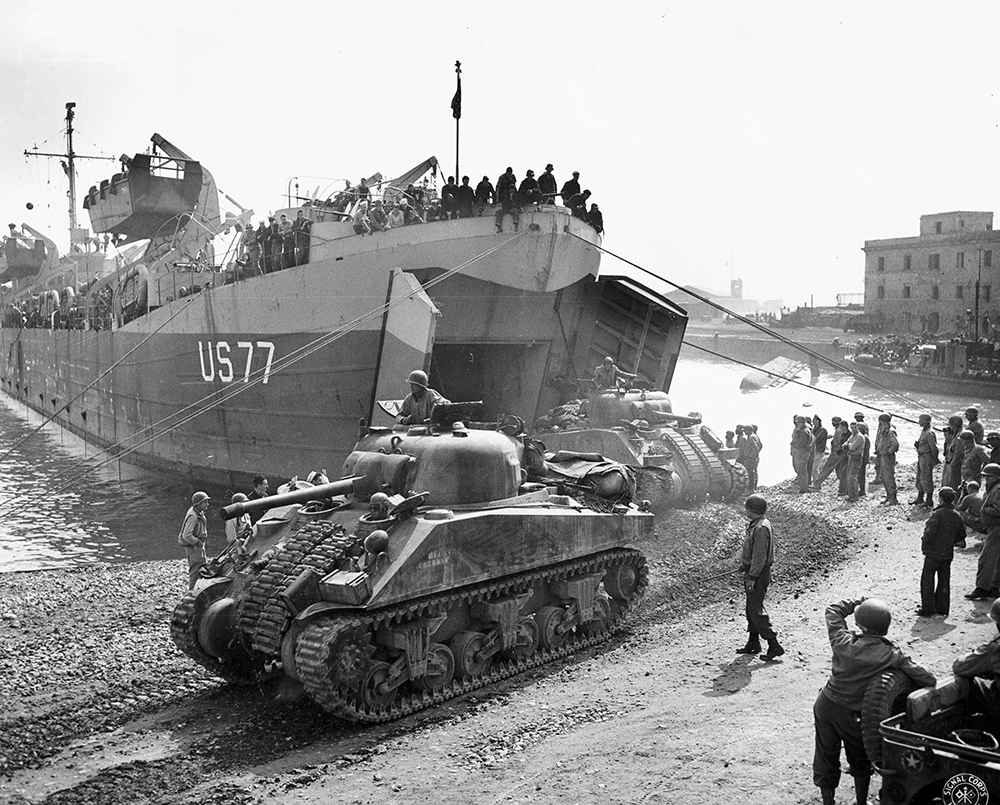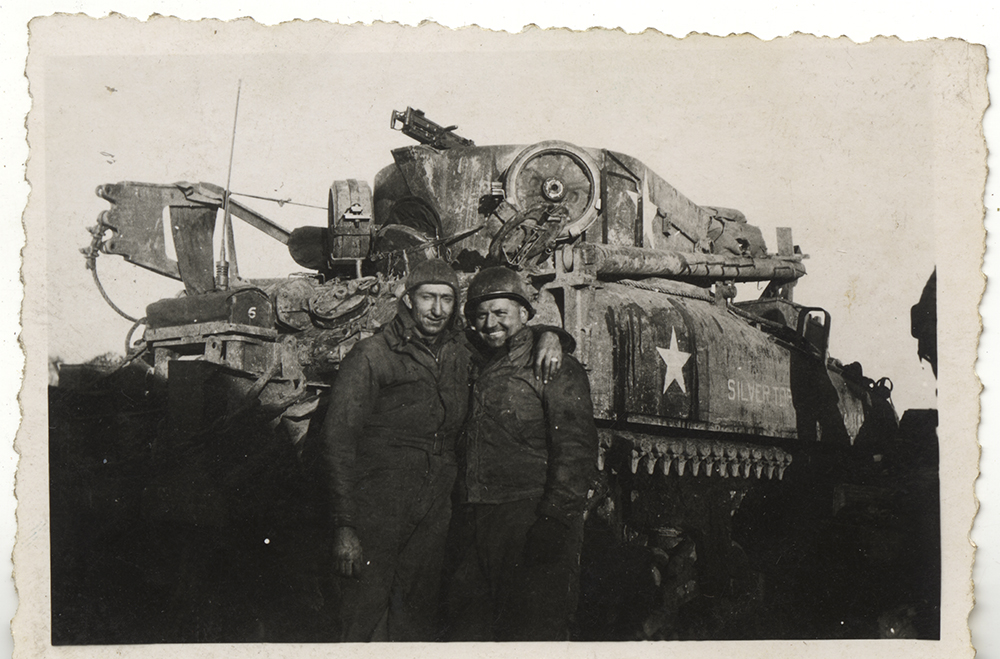
Pittsburgh’s contributions to World War II ranged from the smallest bomb fuses to the largest artillery. But the 38-ton Sherman tank parked in front of the History Center reminds us that there’s nothing quite like the drama of a legendary vehicle.
While workers at Dravo and American Bridge turned out massive LSTs, ships longer than a football field that carried tanks, jeeps, and other heavy equipment, companies such as Westinghouse, Blaw-Knox, and U.S. Steel produced crucial components for the war machines those LSTs carried, including the M4 Sherman tank. Area residents enjoyed an opportunity this September to get up close with LST 325, similar to the ships built in Pittsburgh and Ambridge. Now this weekend, the Sherman tank takes center stage at the Heinz History Center.
On Saturday, Oct. 24, 2015, tank owner John Tippins, members of the U. S. Tank Corps Volunteers, Retired U. S. Army Col. Kevin W. Farrell, and members of the First Frontier Mechanized Calvary will join History Center staff for a special day-long program exploring the impact and meaning of the M4 Sherman tank.
Reportedly Gen. Patton’s “tank of choice,” the Sherman became the most widely used allied tank during World War II. Nearly 50,000 rolled off of American Assembly lines between 1942 and 1945. Built for speed and agility, the Sherman first saw combat 73 years ago this month, with British forces in the North Africa campaign at the Second Battle of El Alamein in October 1942. The Sherman eventually gained greater fame as the tank that helped American forces drive the Axis out of Europe.
That victory came at a cost. Life on a Sherman tank crew was grueling and dangerous. Experience mattered. Men gained intimate knowledge of the machines they lived inside during combat. They sometimes served with the same small crew for years and developed close bonds, similar to those associated with crews of large World War II airplanes, such as the B-17 and B-24 bombers. Like airplane crews, some tankers named their machines and even considered them an extra member of the military family.
Now visitors to the History Center can learn more about the complex history of these legendary vehicles and the real men who served in them. Special tours by the veteran tankers of the U. S. Army Tank Corps Volunteers and a “tank talk” by U. S. Army Col. (Retired) Kevin W. Farrell, senior military advisor to Brad Pitt in the movie “Fury” (2014), offer the chance to get up close and personal and understand the vital contributions of the Sherman tank in a new and deeper way.

In case you missed it, watch this video to see how we moved a 38-ton Sherman tank to its temporary home outside the History Center:
Leslie Przybylek is curator of history at the Heinz History Center and lead curator of the We Can Do It! WWII exhibit.
